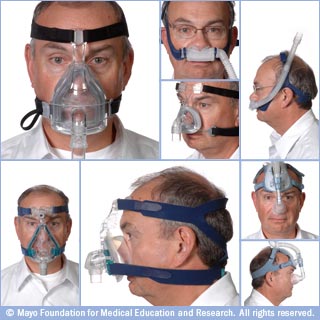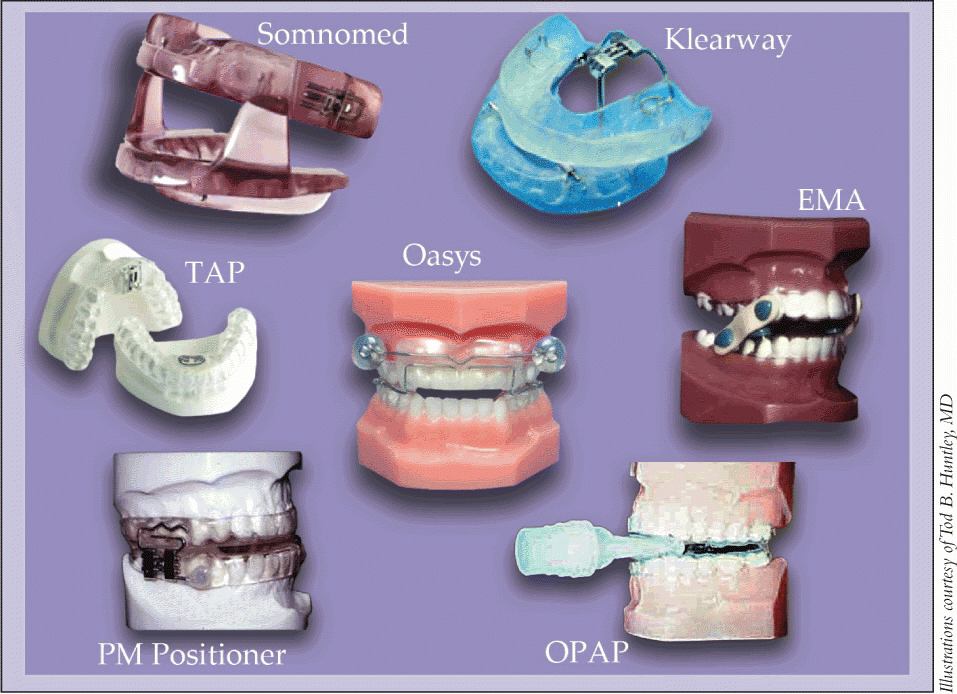Sleep Apnea
Obstructive Sleep Apnea occurs when the tongue and soft palate collapse onto the back of the throat. This blocks the upper airway, causing air flow to stop, which in turn causes the blood oxygen level to drop. When the blood oxygen levels drop low enough, the brain moves out of deep sleep and the individual partially awakens (an arousal). The airway finally reopens, usually with a loud gasp. The individual then moves back towards deep sleep until the next apnea occurs. This cycle of events may occur many times during the night, sometimes once per minute.
The combination of low oxygen levels and fragmented sleep are the major contributors to most of the ill effects that the sleep apnea patient suffers. In addition to excessive daytime sleepiness, studies show that sleep apnea patients are much more likely to suffer from heart problems (heart attack, congestive heart failure, hypertension, high blood pressure), strokes, metabolic syndrome, weight gain, diabetes, mood swings, acid reflux, and sexual dysfunction as well as having a higher incidence of work related and driving related accidents. The diagnosis of sleep apnea is graded mild, moderate, or severe.
Risk Factors Include:
- Snoring
- Weight gain
- Getting older
- Family history
- Malformation of the orofacial area (misaligned teeth, jaw, palate)
- Bruxism (teeth grinding)
- Polycystic Ovarian Syndrome (PCOS)
- Menopause
- Progesterone/Estrogen deficiency
- Anatomy and physiology of the airway
- Small Jaw, Thick Neck (greater than 17″ males, 16″ females)
Treatment
Treatment is variable based on the severity. In mild and moderate cases a dental device made by a trained dentist is the primary recommendation. In severe cases a CPAP machine is still the standard of care due to the high success rate. In some cases patients are CPAP intolerant (unable or unwilling) to use the machine. Some recent research says at 3 years 80%+ of the patients who were given a CPAP have stopped using it.

Here are some normal CPAP options for a mask. As you can see, they are not the most attractive or comfortable. Getting through airport security takes extra time and effort if your travel for your work with the machine and mask.
Treatment Options
a. Behavior Modification
- Sleep Position Training: In some patients, obstructive sleep apnea is related to sleeping on one’s back. Positional therapy for the treatment of OSA has been studied. According to some researchers the prevalence of positional OSA is between 55 and 60%. Several devices, including the Snore-Ball and Snore Relief Cushions, have been developed to encourage the patient to sleep on his/her side rather than back. Do not sleep on your back.
- Weight reduction is occasionally the only treatment needed for the obese patient. Long term results require behavior modification to maintain reduced weight. (Neck size is a reliable index as a predictor of OSA. In men OSA is more prevalent in those with a neck size > 17 inches; in women, neck size > 15.5 inches.)
- Avoid heavy meals after 8pm.
- Reduction in the intake of alcoholic beverages
- Limitations in the use of sedatives and muscle relaxants
- Cease smoking

(Dental Devices made by trained dentists)-Primary therapy for mild and moderate sleep apnea and snoring
Oral appliances were first utilized in the 1930’s to help people breathe properly during sleep. By the 1980’s, physicians and dentists began to seriously study the effectiveness of oral appliances to treat snoring and obstructive sleep apnea and found them to be effective in many, but not all cases. Recent studies show oral appliances to be most effective in treating snoring and mild to moderate obstructive sleep apnea. However, some appliances have been shown to effectively treat severe apnea in some cases. While oral appliances are often effective, it is important to know that they are not adequate for everyone and to date, it is not possible to predict the successes from the failures prior to treatment. The two categories of devices are mandibular advancement devices or tongue retained devices.
c. Continuous Positive Air Pressure (CPAP)
A common treatment for treating breathing disorders has incorporated the use of a specially designed mask that is strapped onto the head at bedtime. A plastic device, it completely covers the nose and mouth and is connected to a machine with an air hose. This device has become commonly referred to as a CPAP Mask.
Despite it’s popularity (the CPAP Mask is considered to be the gold standard of treatment), recent research indicates that there is only 46% compliance after the first 3 months of treatment. 37% of those still using the CPAP soon abandon it completely – Journal of Respiratory Therapy
Physical Side-Effect
- Lacerations to the bridge of the nose due to the mask
- Rawness of the throat due to constant airflow
- Bloating of the stomach
- Deprivation of sleep, the very reason the mask is prescribed
Social Side-Effect
- Patient Embarassment
- His or Her bed partner’s lack of acceptance of the device
d. Surgery
Medical intervention incorporating different types of surgery which range in invasiveness may or may not be successful. Some estimates indicate that surgery may be 20% to 50% effective. Examples of some irreversible breathing disorder treatment alternatives include:
- Tonsillectomy – Removal of Tonsils
- Adenoidectomy – Removal of Adenoids
- Uvulopalatopharyngoplasty (UPPP) – removal of excess throat tissue to widen the airway
- Tracheostomy
- Gastroplasty
- Nasal surgery
- Radiofrequency palatoplasty
- Tongue base suspension
- Maxillomandibular advancement
While tracheostomy and maxillomandibular advancement have been shown to be efficacious, they are quite invasive.
The other options are far less predictable.








